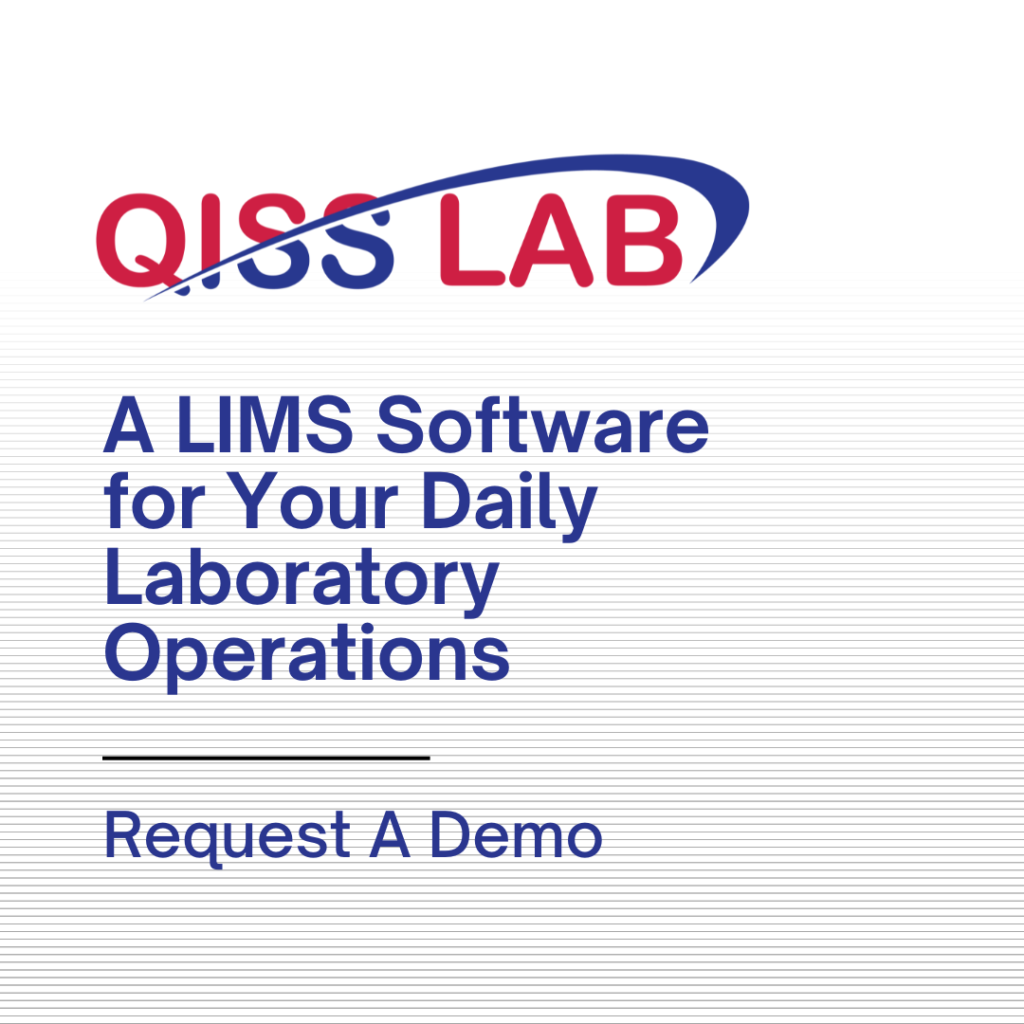A lot of the attempts to create a better world, to find solutions and make new discoveries take place inside laboratories. To facilitate these endeavours, a range of resources are needed; resources such as raw materials, machineries, equipment/tools among many others, and these very resources or supplies are known as lab inventory. Lab inventory can be extensive and of a great multitude, hence the requirement to manage it properly with efficiency. In this article, we are going to take a dive into the know-how of managing lab inventory to achieve maximum level of efficiency and ultimately, productivity.
The Importance Of Efficient Lab Inventory Management
Efficient inventory management is the backbone of a well-functioning lab. First and foremost, it helps avoid costly delays caused by missing or expired materials. When you know exactly what’s available, where it is, and when it needs to be reordered, you can plan your experiments or testing workflows with confidence. It also plays a critical role in reducing waste.
For example, if reagents or chemicals expire because no one knew they were sitting at the back of a cabinet, that’s money down the drain- not to mention the added burden of disposing of hazardous materials.
More importantly, proper inventory management ensures compliance with safety and regulatory standards. Many labs handle controlled substances that fall under the jurisdiction of agencies such as the U.S. Drug Enforcement Administration (DEA). The DEA regulates controlled substances through the Controlled Substances Act (CSA), which classifies drugs into schedules based on their potential for abuse and medical use. Laboratories that analyze or store such substances must maintain strict records, implement security measures, and adhere to detailed documentation requirements to remain compliant.
Failing to comply with these regulations can lead to serious consequences, including penalties, fines, or suspension of the lab’s authorization to handle controlled substances. Therefore, good inventory practices protect the lab’s people, reputation, budget, and research quality by ensuring that all materials- especially those regulated by agencies like the DEA- are handled responsibly and transparently.
What Does Lab Inventory Management Include?
Managing a lab inventory isn’t just about writing things down in a notebook or spreadsheet. It’s a structured process that involves tracking every item coming in and going out of the lab. This includes chemicals, biological samples, reagents, consumables, equipment, and even digital data assets in some cases.
The process customarily begins with cataloging every item—assigning names, barcodes or IDs, noting quantities, expiration dates, storage conditions, and associated safety information. It continues with monitoring the usage of those items, updating stock levels, setting minimum reorder thresholds, and maintaining a log of purchases and disposals. For larger labs, this also includes scheduling equipment maintenance and calibration, especially for regulatory compliance.
Modern labs often use Laboratory Information Management Systems (LIMS) or dedicated inventory software to automate many of these tasks, ensuring real-time updates and easy accessibility for all team members. But even in labs that use manual systems, the key is consistency and clarity.
Most Effective Practices For Lab Inventory Management
1. Categorization of Resources
Effective inventory management comes down to a mix of good habits, smart tools, and team coordination. One of the best practices is to establish clear categories for your inventory. Segregate chemicals, samples, consumables, and equipment—and label everything clearly. It saves time and prevents confusion, especially when handling hazardous or sensitive materials.
2. Implementing a Check in/Check out System
Another important habit is to implement a check-in/check-out system for materials and equipment. This helps track usage patterns, ensures accountability, and makes it easier to plan purchases. For instance, if a reagent is frequently used, you’ll know to order more before it runs out.
3. Routine Audits
Regular audits are also essential. Schedule monthly or quarterly inventory checks to update records, discard expired items, and verify that everything is in its place. Pair this with a digital inventory system, if possible, to reduce human error and make data-sharing more seamless. This practice also supports compliance with regulatory requirements, including DEA inspections where accurate recordkeeping and controlled substance inventories are scrutinized.
4. Training Staff
Don’t forget the human side of things—train your team. Everyone in the lab should understand how the inventory system works and why it matters. When inventory management is treated as a shared responsibility, things are far less likely to fall through the cracks.
Furthermore, integrate inventory tracking with your lab’s workflows. If your inventory system doesn’t align with how your team works, no one will use it properly. Make it easy to access, update, and understand.
The Know-How of Managing a Lab Inventory:
Managing a lab is one of those behind-the-scenes responsibilities that can make or break the efficiency and safety of any laboratory. While many labs focus on improving their own internal systems, there’s growing potential in looking beyond individual setups and thinking collectively. One interesting model to explore is something called Collaborative Consumption.
Collaborative Consumption Model
At its core, collaborative consumption is about shared access to goods and resources rather than individual ownership. This principle can be adapted to lab environments or large institutions where multiple labs exist under the same roof. It aligns well with the fundamentals of good inventory management: visibility, organization, and data driven planning. By tracking usage across multiple labs, institutions can better anticipate needs, manage stock levels more accurately, ultimately saving both time and money. Now we shall take a look into how it could work:
1. A Central Inventory Hub Across Labs
Instead of each lab maintaining a separate stash of supplies, institutions can create a centralized inventory hub. This doesn’t mean taking control away from individual labs, but rather encouraging them to contribute to and benefit from a shared pool of regularly used materials.
2. Live Inventory Tracking Across Departments
A single digital platform- accessible to all authorized users- can display real-time updates on what’s available, what’s running low, and what’s expired. This minimizes duplicated orders and ensures better planning for upcoming experiments.
3. Usage Patterns That Inform Planning
With a shared system, it becomes easier to track how often certain items are used across different labs. This data can be used to forecast demand, fine-tune procurement schedules, and reduce waste caused by overstocking or underutilization.
4. Clear Protocols for Sharing and Restocking
For this model to work smoothly, institutions need to establish clear guidelines: how to request items from another lab, how to log usage, and how to ensure accountability without creating bureaucratic delays.
5. Sustainability as a Built-in Outcome
This kind of collaborative system naturally cuts down on waste. Labs can flag excess stock they no longer need, allowing others to claim it before it expires. Even recycling and disposal processes can be coordinated to reduce environmental impact.
Here is How Our QISS LAB Software Can Come in to Help
When using QISS LAB Software, the most effective practices become simpler, more streamlined, and less prone to error. Below, we’ll explore how the key practices mentioned earlier can be made more efficient with QISS LAB Software.
Categorization of Resources: Identifying and Planning for Lab Needs
A well-structured inventory starts with clear categorization. In a lab environment, this involves identifying all the samples, reagents, chemicals, consumables, and equipment that are needed to carry out day-to-day work. With QISS LAB Software, lab managers can quickly identify what’s in stock and what is being used the most. By tracking usage patterns through the software, lab managers can send real-time information to the procurement team, which can then plan accordingly to restock the required resources.
The categorization feature also helps lab managers maintain control over inventory levels. For example, when a certain reagent or sample is nearing depletion, the software sends an alert, making it easy for the lab manager to communicate needs to the procurement team. This process helps ensure that labs are never caught off guard by stockouts, allowing for seamless experiments and testing workflows.
Implementing a Check-In/Check-Out System: Tracking Usage and Reordering
QISS LAB Software helps manage a check-in/check-out system by allowing both lab and procurement managers to track what items are being used and how frequently. When items are used—whether reagents, equipment, or consumables—the software updates the inventory in real-time. This visibility helps the procurement manager and lab manager coordinate effectively, ensuring the right resources are always available.
For example, if a reagent is consistently being used up at a fast rate for particular tasks, the software will highlight this trend. The procurement team can then reorder it in advance, avoiding delays or interruptions in lab work. By combining this system with a clear record of usage, both procurement and lab managers can make data-driven decisions about restocking, helping to prevent under or over-ordering.
Restocking Based on Inventory Space and Usage: Efficient Planning
An important challenge in inventory management is ensuring there’s enough space for all the necessary materials without overcrowding storage areas. QISS LAB Software makes this easier by giving lab managers a clear view of their storage space and inventory levels. This feature enables managers to plan restocking effectively, ensuring that there’s sufficient room for new materials while preventing overstocking of items that aren’t frequently used.
When a new batch of supplies is received, the software is immediately updated, notifying both procurement and lab managers. The software’s space-tracking capability helps ensure that the inventory is well-organized and that new stock is placed in the appropriate location. This system reduces the time spent searching for materials and makes it easier to maintain an efficient and tidy lab.
Real-Time Stock Updates and Expiry Tracking
Once new stock is delivered by the supplier, QISS LAB Software helps track every item’s expiry date, ensuring that reagents and solutions don’t go unused beyond their shelf life. The software alerts lab managers about the expiry of materials in real-time, providing valuable information that can be used to plan further procurement or disposal. This functionality is critical for maintaining the quality of experiments and avoiding waste.
For example, a reagent might be nearing its expiration, and the software will automatically notify the lab manager. The software will also display how long the product will last, allowing managers to plan how much needs to be made or replaced. If any items are damaged or no longer viable, lab managers can easily mark them for disposal, keeping the inventory up-to-date.
Inventory Data: Usage Frequency and Restocking Decisions
QISS LAB provides data that allows lab managers to track what solutions or reagents are being used most frequently, enabling more accurate restocking decisions. If a certain solution is often needed in experiments, the software can automatically generate usage statistics, giving the lab manager valuable insight into purchasing trends.
Furthermore, the software can calculate the amount of solution needed based on usage frequency and expiration dates, helping to avoid under or over-ordering. By tracking stock levels in this way, QISS LAB helps ensure that lab managers have just the right amount of material at the right time, preventing both shortages and wastage.
Disposal Tracking: Responsible Waste Management
One often-overlooked part of inventory management is responsible disposal of expired or unused materials. QISS LAB makes this process simple by allowing managers to log disposals directly in the system. Whenever a product is no longer usable—whether due to expiry, damage, or obsolescence—it can be tracked and marked for disposal.
The software’s disposal feature ensures that expired or damaged items are removed in a timely and efficient manner, which also plays a crucial role in regulatory compliance. The ability to track and manage disposal ensures that labs maintain their safety standards, reduce environmental impact, and stay aligned with regulatory requirements.
Central Inventory Hub Across Labs
With QISS LAB Software, labs can easily create a centralized inventory hub across different departments within one location. Instead of each department managing separate supplies, the software allows shared access to a common inventory pool- while still letting each team track and manage their own usage.
This allows real-time visibility into stock levels, usage trends, and expiry dates, helping departments coordinate better, reduce waste, and avoid duplicate orders. This way, labs can maintain individual control but benefit from collective efficiency and smarter inventory planning.
So we have come to the conclusion that lab inventory management is the very foundation that supports every experiment, every breakthrough, and every safe, compliant practice within the lab; whilst also being a standard administrative task in itself. When labs have a system wired to offer transparency, accountability and real-time insights, it allows scientists to focus on what truly matters: the research itself.
That’s where QISS LAB makes a real difference; it transforms a traditionally tedious process into something smart and seamless. Whether you’re tracking expiry dates, monitoring frequently used reagents, managing disposal or coordinating between departments, QISS LAB takes care of the details so your team can move faster, plan better and waste less.
To get more tailored insights, contact our team today!



